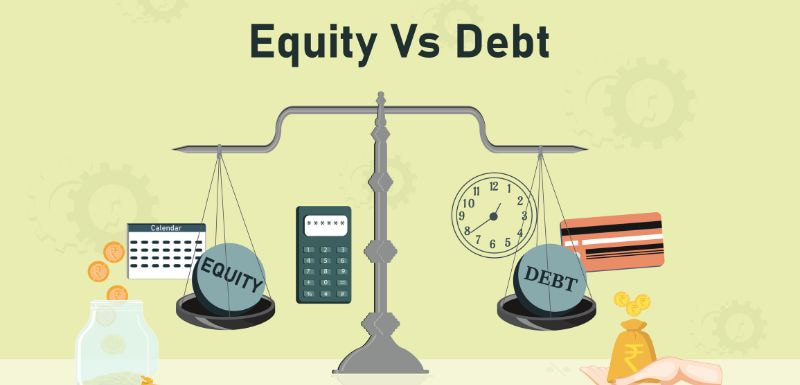A Beginner's Guide to Mutual Fund Investments

With traditional investments offering lower returns, more investors are turning to Mutual Funds for inflation-beating gains. However, not all funds suit everyone. Understanding investment objectives, assessing risk profiles, and seeking expert advice can help investors make informed decisions. The right Mutual Fund investment aligns with your financial goals and risk appetite.
As returns from traditional investments continue to stay muted, more and more investors are turning towards Mutual Fund Investments to earn inflation beating returns from their money. This is evidenced by fact that investments from beyond the top 15 cities witnessed a hefty 35% year-on-year growth in September ’17, compared to the same period last year. The total industry folio count stands at 6.2 Crores today.
If you’re new to the concept of Mutual Fund Investments, here are some useful pointers to help get you started.
Mutual Fund Investments are Pooled Based on Common Objectives
Mutual Fund schemes invest across different asset classes – including blue-chip stocks, small & mid-cap stocks, government bonds, corporate bonds and even gold. Each asset class carries a distinct degree of investment risk. The way in which a particular scheme mixes and matches these various asset classes will define its “investment objective”. This investment objective is clearly detailed out by Asset Management Companies in the fund’s KIM (Key Information Memorandum). For instance, a fund that combines large cap (blue chip) stocks with highly rated bonds in a 20:80 ratio will be known as a “debt-oriented hybrid” mutual fund, and would be suitable for low to moderate risk takers with a 2-3-year time horizon. On the other hand, a sectoral fund that invests only into banking stocks, will be targeted at more market savvy, higher risk-taking individuals.
All Mutual Fund Investments are not Suitable For Everyone
Before making a Mutual Fund Investment, it is highly recommended to consult with a professional Financial Advisor and understand not just the risks carried by the fund itself, but your own risk profile as well. A risk profiling exercise could involve answering a few questions about the current state of your finances, as well as some hypothetical questions that aim to ascertain your reactions to various market scenarios. Doing this will ensure that your money flows into the Mutual Fund that is most suitable for you. As an example: if you’re a retired senior citizen, you should ideally not overexpose your retirement savings to equities, even if you might have a high-risk appetite. Conversely, a 25-year-old saving for his retirement should opt for more aggressive, equity-based funds for his SIP’s, even if he’s a moderate risk taker. The best Mutual Fund investment for your needs can be ascertained after combining your financial goals, your risk profile and your time horizon. All Mutual Funds – even debt oriented ones – carry risks, even if they may vary in their degrees.
Getting Started With Mutual Fund Investments is Easy
Getting started with Mutual Fund investments doesn’t involve wading through mountains of paperwork, making fifty signatures, going for medical tests, or awaiting approvals from underwriters. The process begins with a simple KYC (Know Your Customer) exercise that involves providing an address proof, a ID proof, a PAN card and a signed form (with a photo) to your Advisor. Once your KYC application gets approved, you can start making Mutual Fund Investments by signing a simple form and providing a cheque, along with a print out of your KYC approval proof. Furthermore, online platforms such as BSE stAR MF and NSE II have now made the process of repeat investing, redeeming or switching your money completely paperless. Furthermore, Mutual Fund Investments have no hidden charges associated with them, and they are generally much lower cost than most other Financial Instruments.
Selecting The Right Mutual Fund Investment Can be Tricky
With a couple of thousand Mutual Fund schemes being present today across multiple categories, it is a tricky job to select a fund that meets your needs. To make matters more confusing, slickly marketed NFO’s (New Fund Offerings) hit the market during boom times, to cash in on sentiment and garner impressive collections. Oftentimes, new investors get drawn to the lure of investing into a fund that performed well in the past six months or a year. Alternatively, many clients select high risk funds without really understanding what they’re getting into. First time investors are therefore advised to consult with a reputed Financial Advisor while planning their Mutual Fund Investments.
Your Investing Experts
Relevant Articles
How To Select The Best Mutual Funds For Long Term Goals
Mutual funds offer a compelling way to invest for long-term goals, leveraging professional management and diversification to potentially achieve significant returns. But with a vast array of options available, selecting the best mutual funds for the long term can feel daunting. This guide will equip you with the knowledge to confidently navigate the mutual fund landscape and learn how to select the best mutual fund aligned with your long-term aspirations.
Understanding Debt and Equity Funds: Key Differences and Benefits
Investors can choose from different types of mutual funds depending on factors like investment time horizon, return expectation, lock-in period, taxation, risk involved, etc. You can look at equity funds for growth and debt funds for stability. In this article, we will understand what are equity funds and debt funds, the difference between equity and debt mutual funds, and things to consider before choosing these funds.
ETFs Versus Index Funds: What Are the Differences, and Which One Should You Choose?
In the last few years, there has been a rise in passive investing due to factors like diversification, low costs, wide availability and choice of passive funds, ease of investing, etc. When it comes to passive investing, there are two ways of doing it. Exchange traded funds (ETFs) and index funds. In this article, we will understand what are ETFs and index funds, the differences, and which one you should choose.
.png)


